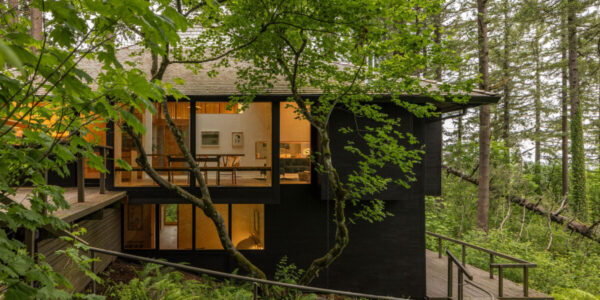
This House Survived a Wildfire Because of Its Smart Design. Here’s How.
A modern house in Sonoma Country narrowly escaped destruction by a record-breaking blaze, thanks to its eco-smart design and plenty of luck.
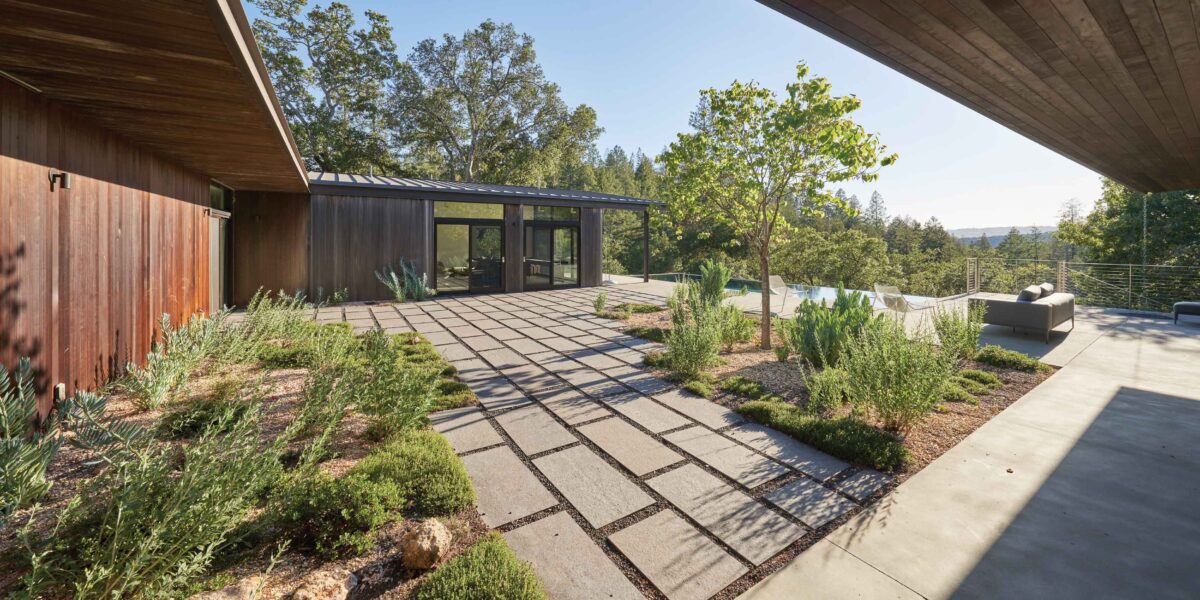
Kyle Pinjuv walked down the narrow road near his cabin in Nuns Canyon, just outside Glen Ellen, California, and stood at the edge of the fire. It was 4 a.m. on Monday, October 9, 2017, and he had been up all night waiting to evacuate. There was one way out, the winding passage before him, and it was engulfed in flames. The fire that had begun at 10 p.m. the night before raged on. If he attempted to drive out, his tires could melt. Or a tree could collapse on the road, or on his car.
“We were deep in the canyon, very isolated,” says Pinjuv, who works for the Sonoma Land Trust, a local land conservation nonprofit. He was renting a 1950s-era wooden cottage on a protected SLT easement, a 37-acre property owned by a San Francisco family who’d left the only other structure on the property—a modern concrete, steel, and glass country home designed by architect Glenda Flaim of Butler Armsden—to return to the city just hours before. They had no idea that tragedy loomed.
“Naively, I was under the impression that there was some form of rescue if we were in serious danger,” says Pinjuv, who was in communication with local firefighters who told him not to risk fleeing by car until they gave him an all-clear signal. “They’re not sending a helicopter in the middle of the night during 70-mile-per-hour winds to get you. We were on our own.”
Just after 6 a.m., the wind shifted, and Pinjuv, his dog, and a neighboring family with two kids were able to weave through the fields of a neighboring vineyard to safety.
“When I finally drove away, the fire was about 20 feet from the house,” Pinjuv says. “It was kind of like a farewell. I knew that it wouldn’t survive.”
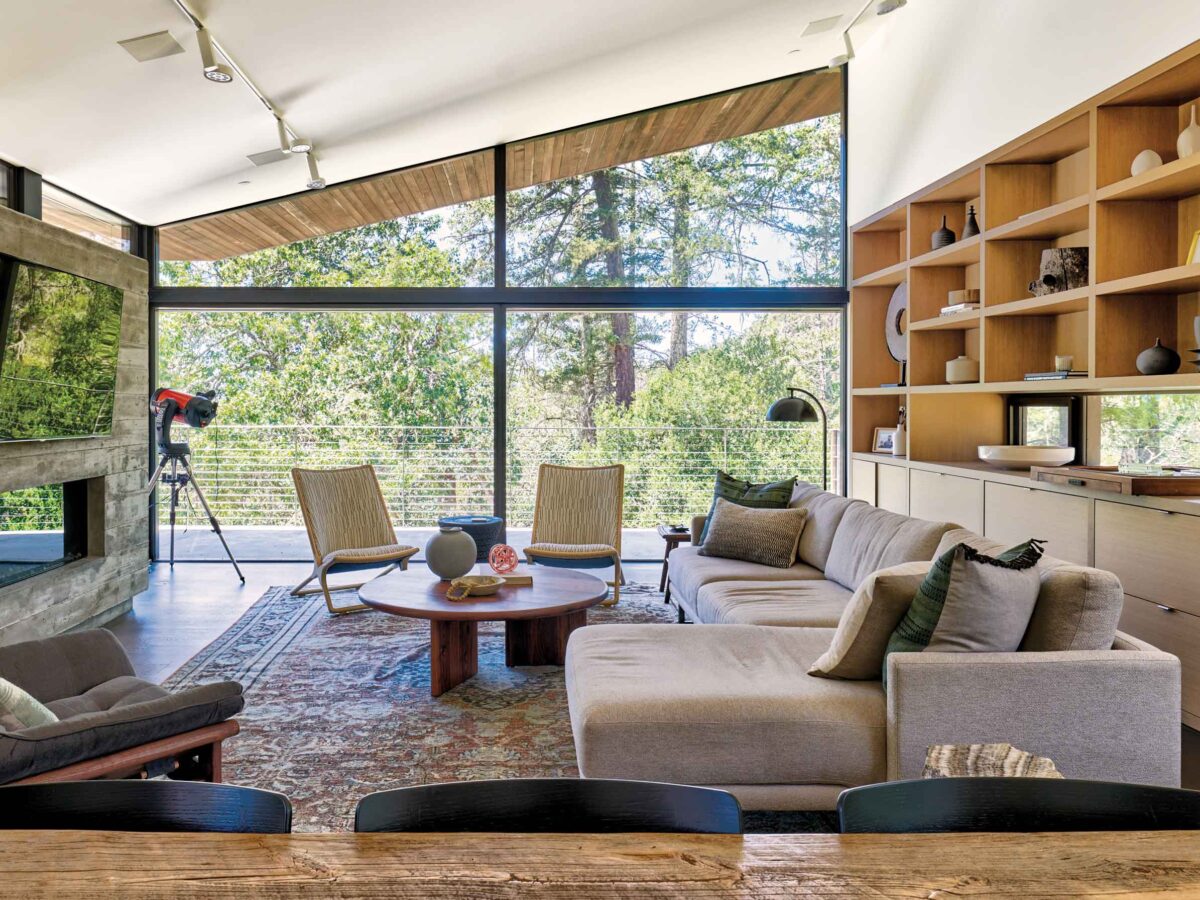
Thomas J. Story
The fate of the newer, modern house up the hill, nestled among a shady grove of redwood and oak trees, was less certain. Because power is shut off by the utility company in the event of fire threat, the sprinkler system couldn’t activate. And because of widespread damage to the area, it would be days before the owners would know if it was still standing.
There were, however, a couple of key design elements working in the home’s favor that made its survival more likely. The house had earned a gold-level LEED certification, and according to Flaim, energy-conscious aspects of the structure also made the home better equipped to resist fire. The home had a metal, noncombustible roof. Its windows and vents were thoroughly sealed, which prevented stray sparks from entering the attic and excess smoke from infiltrating the interiors.
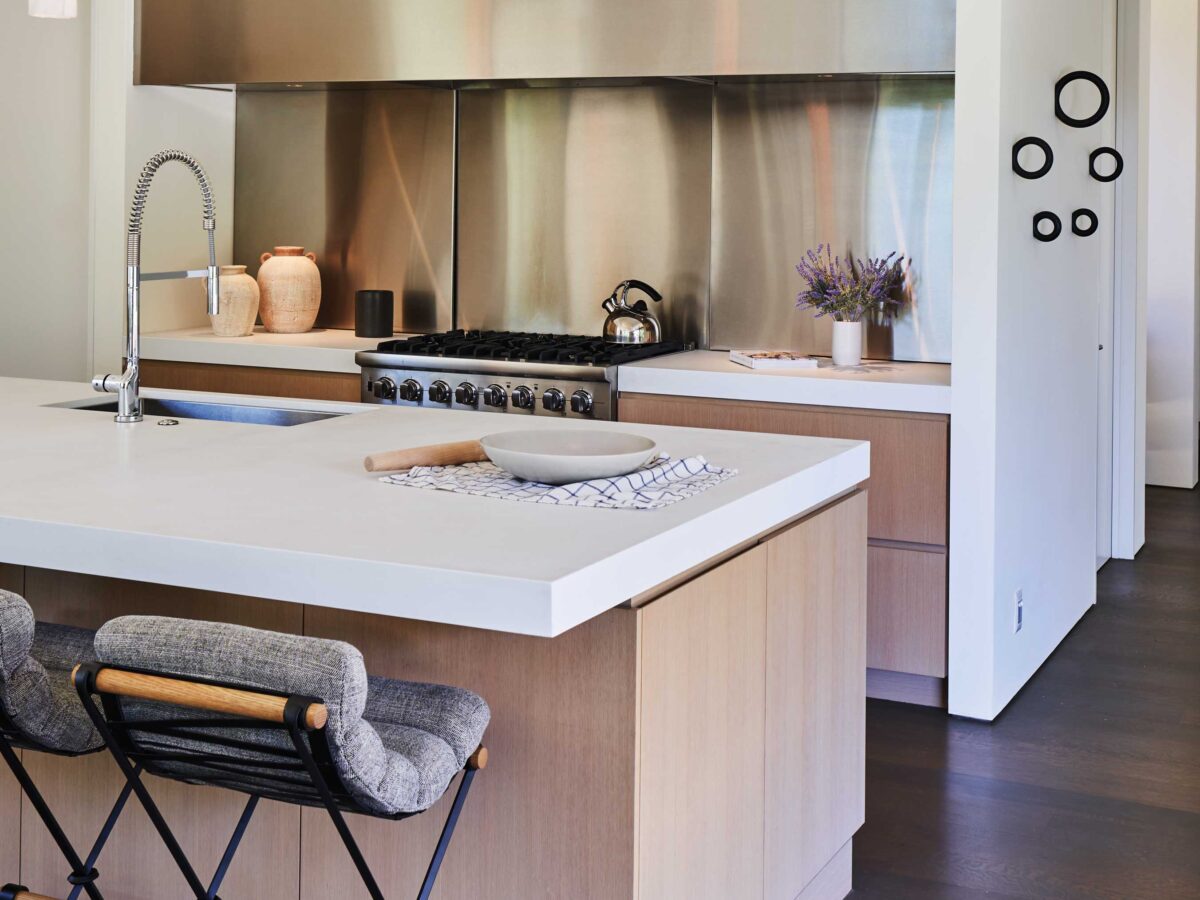
Thomas J. Story
Flame-resistant Alaskan cedar siding backed by fire-rated gypsum board was another prudent choice. And the foundation and hardscaping, particularly a large wall that surrounded the pool sited downslope from the home, was made of concrete (a LEED-friendly material that’s often made with local, sustainable, and/or recycled materials). Investing in what Flaim describes as “invisible costs” gives a homeowner multiple benefits, including resistance to extreme events like fires.
One of the ways wildfires spread rapidly through residential areas is by the very high winds that pick up flying embers, which then land on top of houses, explains Flaim.
“They sit there until the roof catches fire and then it falls into the house,” she says. “All of the houses in the canyon that were lost were older homes with shingled or more combustible roofing materials.”
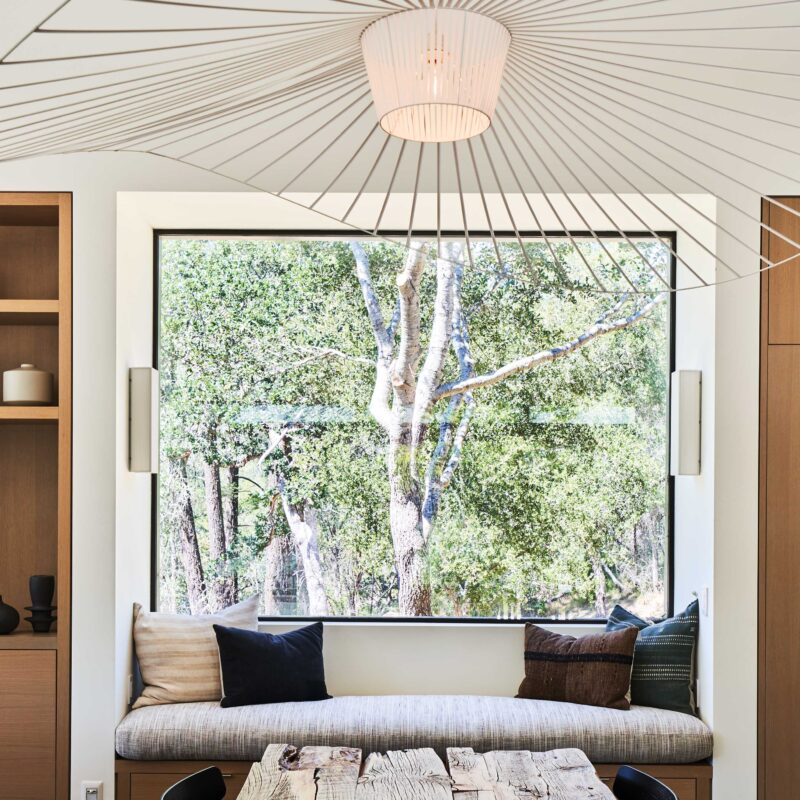
Thomas J. Story
A metal roof can assist with rainwater capture and will reflect, rather than absorb, heat from the sun, and will also keep cool air from leaking out in the summer and preserve warm air inside in the winter. High-quality windows and vents with a thorough seal are another line of defense in an area prone to fires.
“One measure of the performance, or the effects, for energy efficiency is having a very tight envelope,” says Flaim. “The outlets, the windows, the venting, how you seal it and the filtration rate in the house is important. It also helps a lot with smoke.”
Two stressful days after the fire was contained and extinguished, the homeowners were escorted up Nuns Canyon to see if the structure had survived. The ground that surrounded the house on three sides was still smoldering, and the pump house was leveled by the flames, but the house itself remained.
“If you look at the aerial pictures of the house, you can see that as the fire approached, it burned the bocce court and the pump house,” says Flaim. “Then it met the concrete retaining wall around the pool and split in two directions around the house.”
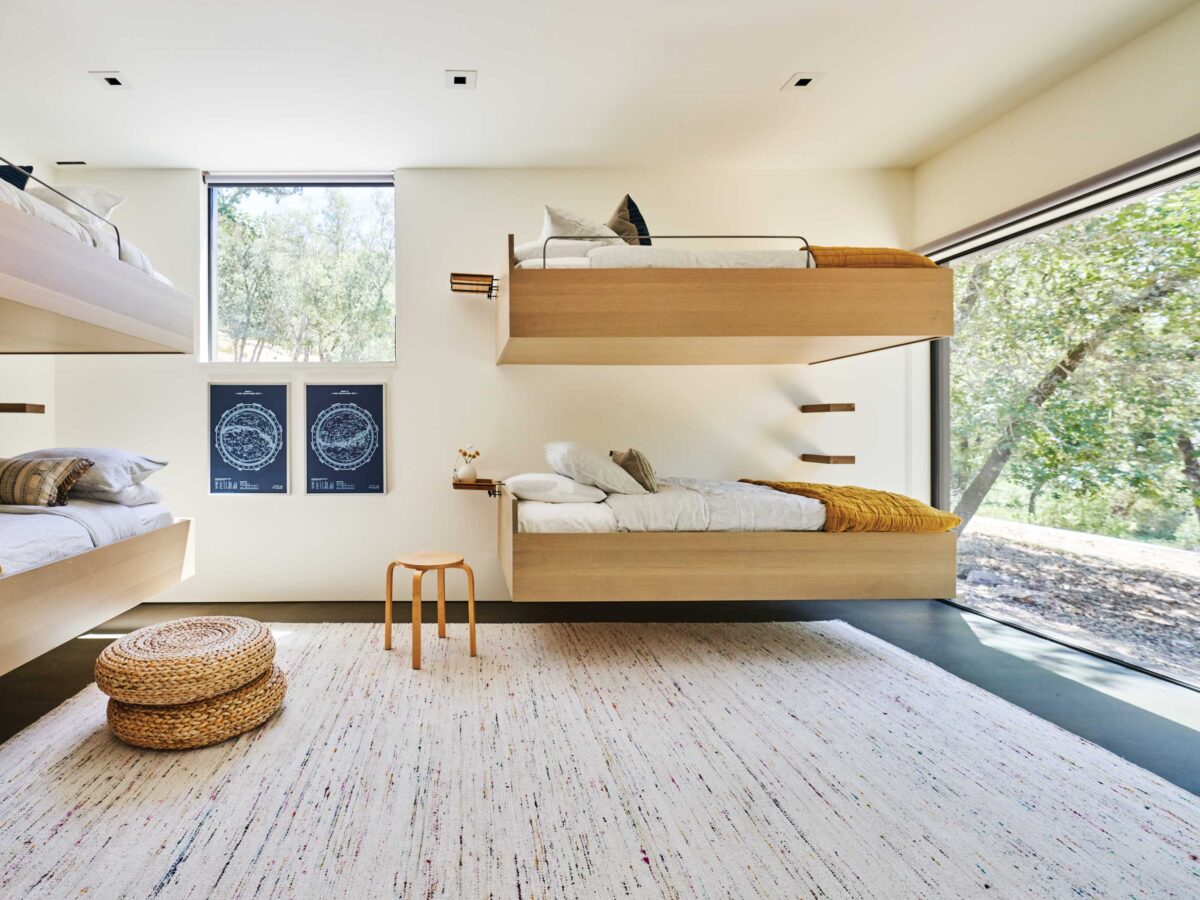
Thomas J. Story
The minimal, streamlined interiors were smoke-tinged but not destroyed. It was nothing that deep cleaning couldn’t fix. The pump house and wells took about a year to rebuild. But the owners and builders purposely left some fire scars on the exterior of the house.
“Our clients didn’t want to erase them,” says Flaim. “A scar on your body tells a story of your experience, and it’s the same thing with a house. We didn’t make it pristine again. We left the signs.”

Thomas J. Story
Pinjuv still works for the Sonoma Land Trust, and the organization has shifted its conservation work to recognize that climate change, not overdevelopment, is the biggest threat to the community and ecosystem.
“These hotter, drier, windier seasons we’re seeing means we’re getting more frequent fires, and they’re getting more intense,” he says. “Being conscious of where, and how, we build our homes in this interface can help save property and lives. So can evacuating when authorities say it’s time to go.
“Listen to your fire fighters,” says Pinjuv, and recognize the risk.
“As more people live in these areas of urban and wildland interface,” he says, “there’s more of a chance that their lives will be affected by fire.”
